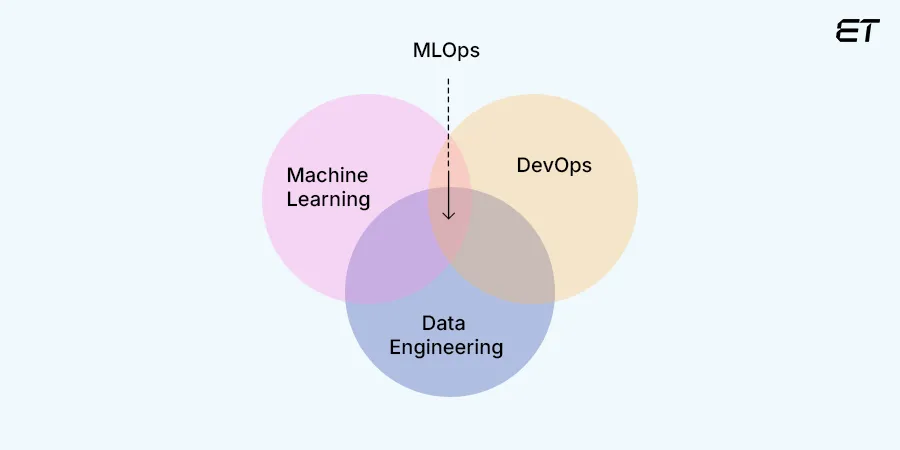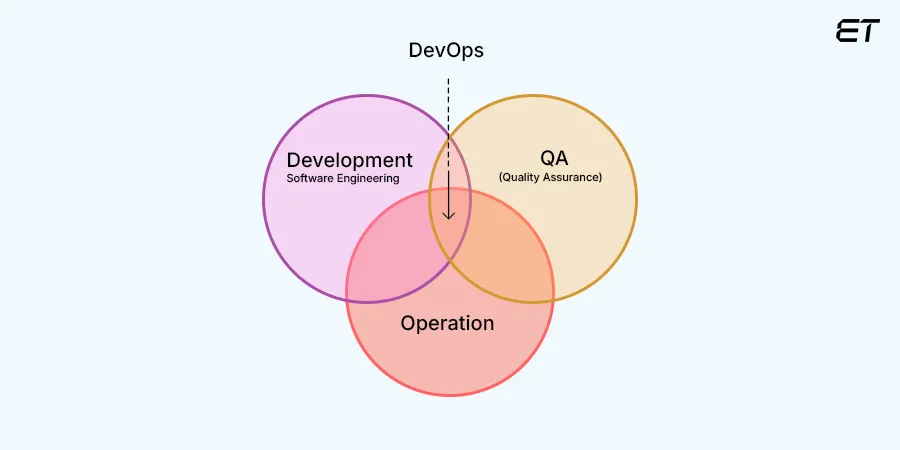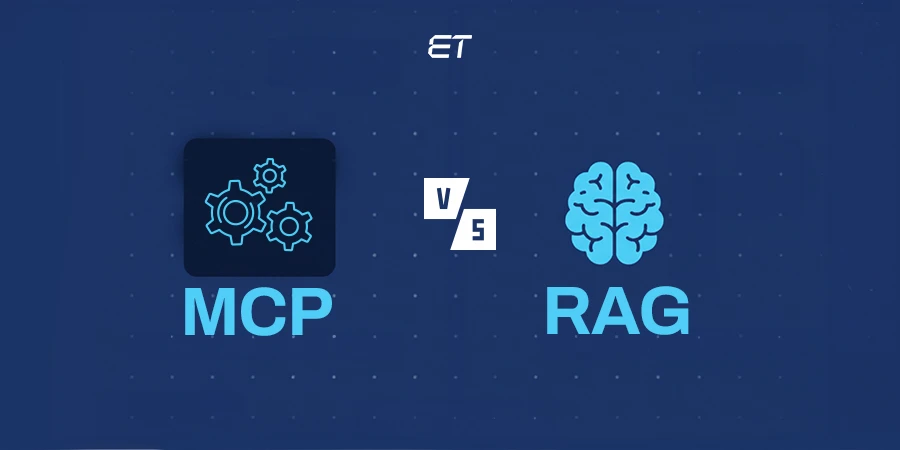
MLOps vs DevOps: Understanding the Key Differences and Synergies
- MLOps focuses on managing the machine learning model lifecycle, including data handling, model training, and monitoring for drift.
- DevOps concentrates on streamlining the software application lifecycle.
- MLOps emphasizes iterative model development and experimentation.
- DevOps focuses on linear software development, emphasizing structured releases and consistent deployments.
- MLOps requires versioning data, models, and code, reflecting the complex dependencies in machine learning systems.
- DevOps primarily focuses on code versioning to ensure collaboration and traceability.
A tech company was working on a smart chatbot. Things were messy. They had trouble getting the chatbot’s code to work smoothly. That’s when they learned about MLOps vs DevOps.
The team realized that while DevOps helped with regular software, it didn’t solve problems with machine learning (ML) models. Also, the people working with data and AI models had difficulty keeping track of changes.
In came the team’s leader, who recognized that they needed a more effective way to manage both the software and the AI. They needed to understand the differences between MLOps and DevOps and how they could collaborate to address their problems. In other words, they needed to learn to move from building software to managing AI.
If you’re in the same boat, this blog will answer all the DevOps vs MLOps queries.
We have vetted DevOps experts to guide your project.
MLOps vs DevOps: TL; DR
Before moving on to the concepts, we wanted to save you time by providing a simple table explaining the main differences in brief.
| Feature | MLOps | DevOps |
| Primary Focus | Machine Learning Model Lifecycle | Software Application Lifecycle |
| Data Handling | Central role of data; versioning, quality | Data is secondary to code; minimal data versioning |
| Model/Code | Models and Data are first class citizens | Code is the primary focus |
| Lifecycle | Iterative Model Development, Training, and Deployment | Linear Software Development, Testing, and Deployment |
| Experimentation | High importance; model validation and tuning | Less emphasis on iterative experimentation |
| Monitoring | Model and Data Drift, Performance Metrics | Application Performance, Infrastructure metrics |
| Versioning | Data, Model, and Code Versioning | Primarily Code Versioning |
| Key Challenges | Reproducibility, Model Drift, Explainability | Release Frequency, Infrastructure Management |
What is MLOps?

Today, you don’t just need to build a regular app. In most cases, you might be developing an app that learns and changes over time (like a self-driving car or a smart recommendation system). That’s where MLOps steps in.
MLOps is short for ‘Machine Learning Operations.’ It’s a set of practices that bring discipline and efficiency to the machine learning lifecycle.
These tactics involve taking those exciting AI models from the lab and putting them into the real world, reliably and repeatedly.
In other words, instead of just writing code, you’re also managing vast amounts of data, training complex models, and ensuring they keep working accurately. MLOps focuses on the following two activities:
- Automation
- Streamlining the entire process
Here are the key aspects of MLOps:
- Data Management: Keeping track of data versions, ensuring data quality, and automating data pipelines.
- Model Development and Training: Standardizing the model training process, making it reproducible, and managing model versions.
- Model Deployment: Putting the models into production environments and ensuring they scale smoothly.
- Model Monitoring: Watching for changes in data or model performance (called “drift”) and retraining the models as needed.
All in all, MLOps helps teams turn experimental AI projects into reliable, scalable, and maintainable systems.
What is DevOps?

Now, let’s shift our focus to DevOps. Consider you’re building a website or a mobile app. You want to get new features out quickly, fix bugs rapidly, and ensure everything runs smoothly. That’s where DevOps comes in.
DevOps is a blend of ‘development’ and ‘operations.’ It’s a set of practices that aim to bridge the gap between software development and IT operations.
Think of it as building a well-oiled pipeline for software. It’s about breaking down the traditional silos between developers (who write the code) and operations (who manage the infrastructure). DevOps encourages the following key aspects:
- Collaboration
- Automation
- Continuous improvement
Here are the key aspects of DevOps:
- Continuous Integration (CI): Regularly merging code changes from multiple developers into a central repository, followed by automated builds and tests.
- Continuous Delivery (CD): Automatically deploying code changes to testing or production environments, ensuring rapid and reliable releases.
- Infrastructure as Code (IaC): Managing and provisioning infrastructure through code, enabling automation and consistency.
- Automation: Automating repetitive tasks, such as testing, deployment, and infrastructure provisioning.
- Collaboration: Fostering communication and collaboration between development and operations teams.
Overall, DevOps empowers teams to build, test, and release software more efficiently, leading to faster innovation and improved software quality. This strategy is about creating a culture of continuous improvement and delivering value to users quickly and reliably.
What are your DevOps company choices in 2025? Get all the details in our blog.
MLOps vs DevOps: Head-to-head Comparison
Let us decode each comparison point of the MLOps vs DevOps face-off one by one.
Primary Focus

The core difference in the MLOps vs DevOps comparison starts with what each discipline aims to manage.
MLOps is designed to handle the complex, iterative process of building and maintaining machine learning models, which are constantly evolving.
This tactic focuses on:
- Data Ingestion and Preprocessing
- Model Training and Validation
- Model Deployment and Serving
- Model Monitoring and Retraining
In contrast, DevOps is dedicated to streamlining the traditional software development lifecycle. Its aim is to accelerate the delivery of software applications while maintaining high quality and reliability.
This strategy focuses on:
- Continuous Integration (CI)
- Continuous Delivery (CD)
- Infrastructure as Code (IaC)
- Automated Testing and Deployment
Therefore, while both MLOps and DevOps strive for automation and efficiency, they address fundamentally different lifecycles, leading to distinct methodologies and toolsets.
Data Handling

Another key distinction in the MLOps vs DevOps differentiation lies in the role of data.
In MLOps, data is a central, critical component, demanding meticulous management. Changes in data can directly impact model performance, requiring careful versioning and quality control.
MLOps data handling involves:
- Data Versioning
- Data Quality Monitoring
- Data Pipelines
- Feature Engineering
Conversely, in DevOps, data is often secondary to code. While data management is important, the primary focus is on the code itself and its efficient deployment. Data is usually handled within the application’s logic rather than being managed as a separate, evolving entity.
DevOps data handling involves:
- Database Management
- Data Migration
- Data Backup and Recovery
- Application Data Access
Thus, the difference highlights how MLOps treats data as a first-class citizen, crucial for model accuracy, while DevOps views data primarily as a component within the application’s architecture.
Model/Code

The fundamental entities in the MLOps vs DevOps topic differ significantly.
In MLOps, machine learning models and the data they consume are treated as first-class citizens. They require the same level of care and management as the code itself.
MLOps model/data management includes:
- Model Versioning
- Model Registry
- Data Lineage
- Model Artifact Storage
In contrast, DevOps primarily focuses on code. The application code is the central artifact, and the infrastructure supporting it is managed through code (IaC). While models might be used in the application, they are not managed as primary assets.
DevOps code management involves:
- Code Versioning (Git)
- Code Quality Checks
- Build Automation
- Code Deployment
Overall, MLOps extends the concept of ‘code’ to include models and data, reflecting the unique requirements of machine learning, whereas DevOps focuses on the traditional software code base.
Similar to MLOps vs DevOps, the DevOps vs Agile comparison is another interesting one.
Lifecycle

The nature of the respective lifecycles also distinguishes MLOps vs DevOps.
For instance, MLOps revolves around an iterative model development lifecycle, characterized by continuous experimentation and refinement.
MLOps lifecycle involves:
- Experimentation and Iteration
- Model Validation and Tuning
- Continuous Retraining
- Model Drift Monitoring
Conversely, DevOps focuses on a more linear software development lifecycle, emphasizing structured releases and consistent deployments.
DevOps lifecycle involves:
- Software Design and Planning
- Code Development and Testing
- Release and Deployment
- Monitoring and Maintenance
Thus, the iterative nature of MLOps reflects the experimental nature of machine learning, while the linear structure of DevOps aligns with the more predictable process of traditional software development.
Experimentation

The role of experimentation differs in MLOps vs DevOps. In MLOps, experimentation is a core component, essential for discovering and optimizing machine learning models.
MLOps experimentation includes:
- Hyperparameter Tuning
- A/B Testing of Models
- Feature Selection
- Model Architecture Search
In contrast, DevOps places less emphasis on iterative experimentation during the deployment phase. While testing is crucial, the focus is more on ensuring the stability and reliability of the software release.
DevOps testing includes:
- Unit Testing
- Integration Testing
- System Testing
- User Acceptance Testing (UAT)
So, the high importance of experimentation in MLOps reflects the need to constantly refine and improve machine learning models, whereas DevOps prioritizes the reliability and stability of software releases.
Monitoring

The types of monitoring vary in the MLOps vs DevOps comparison.
MLOps requires monitoring specific to machine learning models, including data and model drift, in addition to traditional performance metrics.
Monitoring in MLOps involves:
- Data Drift Detection
- Model Drift Detection
- Model Performance Metrics
- Model Explainability Monitoring
On the contrary, DevOps focuses on monitoring application performance and infrastructure metrics to ensure stability and reliability.
DevOps monitoring involves:
- Application Performance Monitoring (APM)
- Infrastructure Monitoring
- Log Monitoring
- Alerting and Incident Management
Thus, the focus on drift detection and model-specific metrics in MLOps reflects the unique challenges of maintaining machine learning models, whereas DevOps monitoring ensures the overall health and stability of software applications and their underlying infrastructure.
Don’t miss out on the 5 best DevOps practices to implement in your business.
Versioning

The scope of versioning differs in the MLOps vs DevOps face-off. In MLOps, versioning extends beyond code to include data and models, reflecting the complex dependencies in machine learning systems.
MLOps versioning includes:
- Data Versioning
- Model Versioning
- Code Versioning
- Pipeline Versioning
In contrast, DevOps primarily focuses on code versioning, using tools like Git to manage source code changes and ensure collaboration.
DevOps versioning includes:
- Code Version Control (Git)
- Configuration Versioning
- Artifact Versioning
- Release Versioning
Thus, the broader scope of versioning in MLOps reflects the need to manage the entire machine learning pipeline, including data and models, while DevOps focuses on ensuring the integrity and traceability of software code.
Key Challenges

The core challenges faced by MLOps and DevOps teams are different, reflecting the distinct nature of their tasks. MLOps teams grapple with issues unique to machine learning, such as reproducibility, model drift, and explainability.
MLOps key challenges include:
- Reproducibility
- Model Drift
- Explainability
- Data Dependencies
In contrast, DevOps teams primarily focus on challenges related to software delivery and infrastructure management, such as release frequency and infrastructure scalability.
DevOps key challenges include:
- Release Frequency
- Infrastructure Management
- Configuration Management
- Collaboration
All in all, the challenges faced by MLOps are deeply rooted in the complexities of machine learning models and data, while DevOps challenges center around the efficient and reliable delivery of software and the management of its supporting infrastructure.
Summing Up
The MLOps vs DevOps comparison addresses distinct lifecycles.
MLOps manages machine learning models, emphasizing data and model versioning, monitoring for drift, and ensuring reproducibility. DevOps streamlines software development, focusing on code deployment, infrastructure management, and rapid releases. MLOps handles data-centric, iterative model development, while DevOps optimizes linear software delivery. Key MLOps challenges include model drift and explainability; DevOps tackles release frequency and infrastructure scaling.
Understanding these differences enables you to integrate AI and software development, ensuring reliable, scalable, and efficient systems.
Let’s end your DevOps queries once and for all. Fill out the Form and connect with our team.






